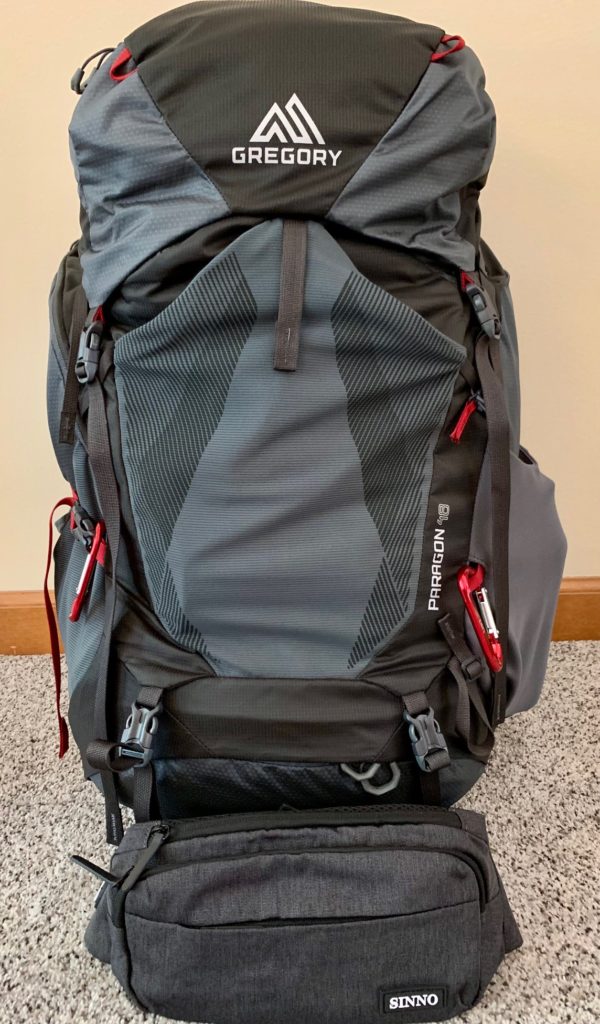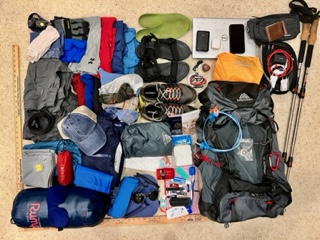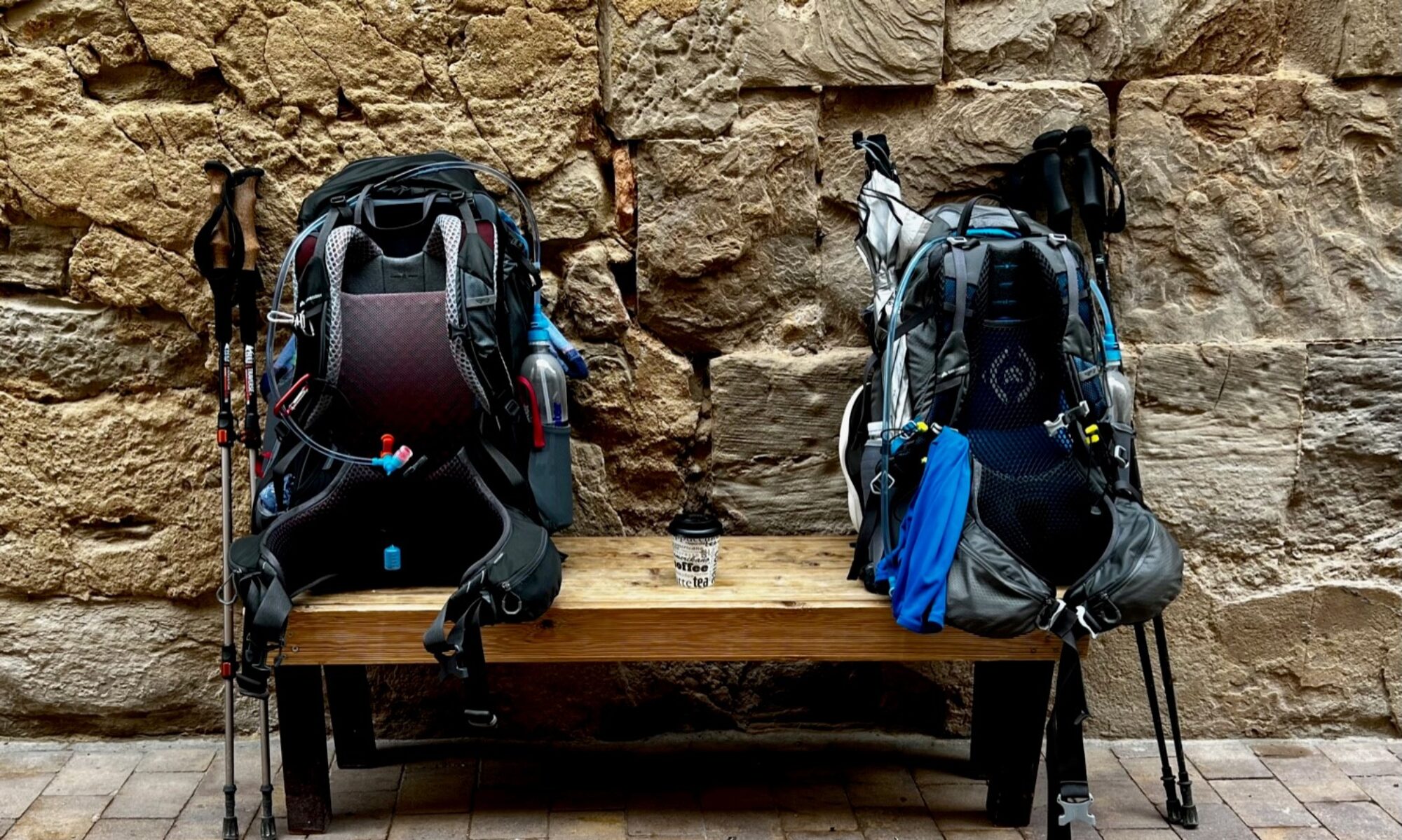After scrutinizing every item in my pack multiple times for redundancies to cut precious ounces, I’ve finally settled on the gear list I plan to carry for our 57-day trek from Saint-Jean-Pied-de-Port all the way to the Atlantic Ocean. Kara shared her list already. Now it’s my turn.

The workhorse will be my Gregory Paragon 48L pack. This is my first experience with a Gregory product, and I have been very happy with it so far. It fits me well and easily holds all my gear. I still have some work to do to optimize the packing and unpacking needed each day, but I suspect I’ll fall into a rhythm once on the trail. So, what made the cut?
Gear list
Backpack and rain cover
Backpack liner bag
Lixada water tube
Trekking poles
Head lamp
Small pocketknife
Blanket
Sleeping sheet/liner
Inflatable pillow/Pillowcase
Eye mask/Earplugs
Sleep shorts/Socks
iPhone
Computer
Chargers/Cables/Adapters
Apple AirTag
Headphones
Charging battery
Microfiber towel
Shower shoes
Toiletries
Lip balm
First aid kit
Sunscreen
Naproxen/ibuprofen
Packing cubes
Hiking shoes
Shoe inserts
Short sleeve shirts – 3
Zip off pants
Shorts
Belt
Long sleeve pullover
Rain jacket
Socks – 3
Underwear – 3
Baseball cap
Sunglasses
Reading glasses
Hiking sandals
Hiking sleeves
Gloves
Buff
Bandana
Fanny pack
Wallet/cards/cash
Passport
Camino credentials
Compression sack
Carabiners
Rock

After packing it all up, the final dry weight (without water and food) comes in at 19.6 lbs. / 8.9 kg. I’ve carried heavier packs on previous backpacking trips in the Sierra Nevada Mountains, but those were only 3–4-day trips. This will be 57. I am happy with everything in my pack for now. It seems like the right balance of “need” vs weight. We’ll see if that changes once we hit the trail.
Striking a balance
I know I have some things others would think are unnecessary, but I’ve done this consciously in an attempt to strike a balance between weight and comfort. Hiking this long will come with a lot of monotony and there will be days I’ll just want to push through and “embrace the suck” as they say in the military. Those are the days I expect to be grateful I didn’t whittle everything down to the absolute bare minimum. But then again, if the weight really starts to be a burden, there may be a few donations made to hiker boxes along the way.
Other than the computer, which we decided we needed to bring for various reasons (and I drew the short straw to carry), what would you say I either overpacked or forgot to pack?
Only 48 days until we hit the trail. It’s getting close now!

Solar charging panel … handy to capture power to store when the sun is out for your electronics
Good suggestion. We went with the rechargeable battery backup since it was smaller and lighter, though.
Having never backpacked further than F Concourse at Hartsfield AND assuming self defense will be on person vs. backpack, never hurts to have LifeStraw water filter, torch/water proof match case, multi-tool and paracord.
We walked part of the Camino Frances. It might be a good idea to have another pair of socks (or 2more). If you have a rainy day, you might use two pair in one day. Test how long they take to dry while hanging indoors, Good socks are one of the most important items for the Camino.
Indoor drying is something we haven’t tested yet. Thanks for the tip! We’ll experiment with that the next time we do laundry to see how long they take to dry.
Solar device charger with flashlight integrated. This came very handy in Bali when hiking their volcano early in the morning when it was pitch black.
Seems like we’re not yet on the solar charger train. I’ll need to start doing some research into these. Thanks for the suggestion!
You need water filtration. I recommend Sawyer filters. Also bust open your first aid kit and make sure it has everything you need. There are some good lists out there from people in the medical field (skinny medic is one I like). You need a “boo boo” kit as well as trauma supplies.
Lack of good water and medical are the fastest ways to get in trouble in the woods.
The Camino de Santiago is a well-defined and well-trafficked route. We’ll be staying in albergues (hostels) each night and will cross through small towns regularly. Sourcing water shouldn’t be an issue. I do need to take a deeper look into our med kit, but it will focus more on blister care rather than serious traumas. I’ll definitely check out your skinny medic suggestions, though. Thanks for that.